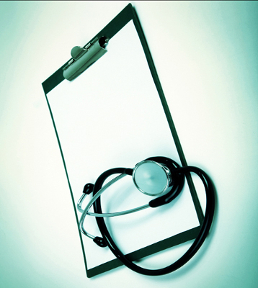Low mark in QLD diabetes sweep
 Experts say there are serious deficiencies in diabetes management in Queensland public hospitals.
Experts say there are serious deficiencies in diabetes management in Queensland public hospitals.
Researchers have audited inpatient diabetes care at 27 of Queensland’s 115 public hospitals, including four of the five tertiary/quaternary referral centres, and rural and regional centres.
“Deficits in inpatient diabetes management include high rates of medication error, hospital-acquired harm (hypoglycaemia, diabetic ketoacidosis), and suboptimal rates of appropriate glycaemic control, particularly in patients treated with insulin,” the resulting paper reports.
“Many patients did not see specialist diabetes team members despite meeting the criteria for doing so.”
The major findings, divided into separate categories, are as follows;
-
Glycaemic control and medication errors – “We identified medication errors for 201 patients (32 per cent), including 121 with prescription errors (19 per cent) and 123 with management errors (19 per cent). At least one prescription error was identified for 79 of 353 patients receiving insulin (22 per cent) and 50 of 478 patients receiving oral hypoglycaemic agents (10 per cent), and at least one management error for 91 patients receiving insulin (26 per cent) and 52 patients receiving oral hypoglycaemic agents (11 per cent).”
-
Hospital-acquired harm – “Four of 49 patients with type 1 diabetes mellitus (8 per cent) developed diabetic ketoacidosis during their admission.”
-
Foot disease management – “Ninety-six patients were admitted with active foot disease, 69 of whom had seen a member of the multidisciplinary foot team within 24 hours of admission.”
-
Peri-operative management – “Sixty patients who had surgery (29 per cent) had clearly documented peri-operative diabetes management plans.”
-
Patient self-management – “Fifty-three hospitalised patients with diabetes were monitoring their own blood glucose levels (6.2 per cent), 72 self-administering insulin (8.5 per cent), and 23 adjusting their own insulin doses (2.7 per cent).”
There was also strong evidence of management deficits, including high rates of hospital-acquired diabetic ketoacidosis (8 per cent), hypoglycaemia (9.5 per cent; 6.0 episodes per 100 patient-days), and diabetes medication errors (32 per cent), and low rates of achieving glycaemic targets (59 good diabetes days per 100 patient-days), particularly in patients treated with insulin.
“Fewer than one-third of patients with diabetes had been seen by specialist diabetes practitioners, and HbA1c levels had been recently assessed in fewer than half the patients,” the researchers wrote.
“Further, a documented peri-operative diabetes management plan was available for fewer than one-third of patients who underwent surgery.”
Lead researcher Dr Peter Donovan, Director of Clinical Pharmacology at the Royal Brisbane and Women’s Hospital, compared the quality of inpatient diabetes management in Queensland with that encountered in England and Wales prior to the instigation of the annual National Inpatient Diabetes Audit in 2011.
“Alternative approaches are needed to reduce patient harm associated with inpatient diabetes management,” Dr Donovan and his team wrote.
In England and Wales, increased funding, the addition of specialist diabetes teams, electronic prescribing and remote blood glucose monitoring, all improved outcomes of subsequent audits.
“These deficits require attention, and ongoing evaluation of outcomes is necessary,” Dr Donovan and colleagues concluded.







 Print
Print